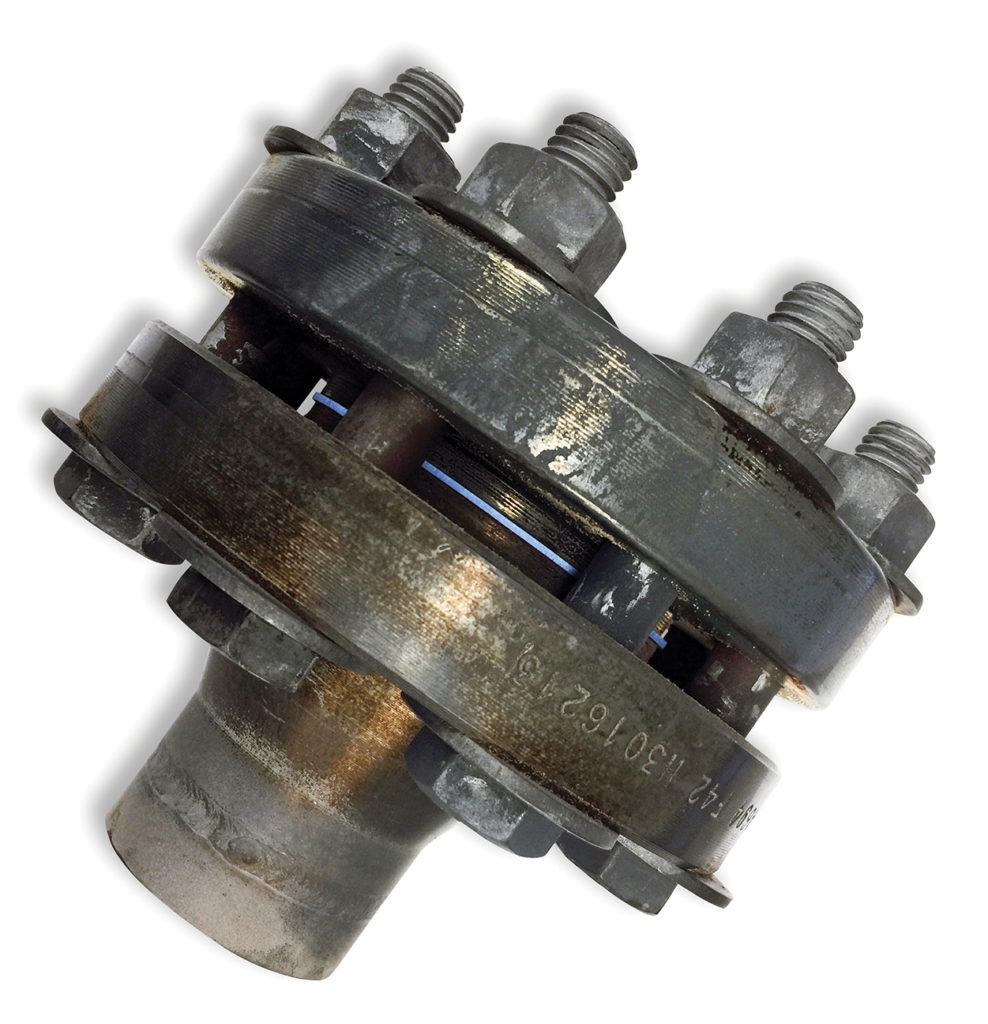December 3, 2019
m & y explained
Gaskets are designed to maintain a static seal between two stationary, imperfect surfaces of a mechanical system and must be able to maintain that seal under different operating conditions, such as temperature and pressure.
The design of bolted flanges requires that gasket constants referred to as m and y be used in the calculation when determining the right gasket for a flanged joint. The gasket must be able to conform to the flange surface and compress enough to seal any voids or spaces. m represents the maintenance factor and the y represents the seating stress.
y is the minimum compressive stress on the contact area of the gasket necessary to provide a seal at an internal pressure of 2 psig and applied to compress the voids of the gasket to conform to the flange surface.
The flange designer uses the m value as a multiplier factor to determine the compressive load on the gasket required to maintain a seal when the vessel is pressurized. This constant is intended to ensure that the flange has adequate strength and available bolt load to hold the joint together, while withstanding the effects of hydrostatic end force or internal pressure. The forces from proper bolting will keep the flange together under pressure and exert additional stress on the gasket m multiplied by the internal force. Then the designer calculates the load required to seat the gasket and performs a second calculation using the m value and the design internal pressure. The flange will be made based on the larger of the two values.

Mechanical solutions are generally rigid coverings or clamp encapsulated to the flange or the void between the flanges. These covers and clamps are made from stainless steel or plastic and incorporate a rubber seal.It is common to use ASTM F586 as a guide to test these values. Ultimately the m factor is the additional preload needed in the flange fasteners to maintain the compressive load on the gasket after the internal pressure is applied to the joint. The dimensionless m value is calculated by dividing the net pressure from the internal pressure.
In service the initial compression of the gasket is reduced by the internal pressure acting against the gasket (blowout pressure) and the flanges (hydrostatic end force). The additional preload needs to be accounted for. The m was created by the ASME to account for this preload. The m factor determines how many times the residual load (original load minus the internal pressure) must exceed the internal pressure.
Critical Considerations
To prevent leaks and injuries it is always important to consult with the manufacturer to determine the m and y factors for the gasket material being used. If the m or y factor cannot be met it will cause an imperfect seal and the gasket design will need to be changed. Often the change can be made by decreasing the surface area of the gasket or by using a thicker gasket. Often thicker gaskets can be unsatisfactory for a long-term solution.
The ASME has developed new gasket design factors for the bolted joint designs where it is important that a desired level of tightness be achieved. The downside to m and y factors is that they do not take fugitive emissions into account, whereas the new assumption is that all bolted joints leak to some extent.
Another consideration to understand is that their m and y constants do not address joint tightness and do not consider potential joint relaxation due to temperature effects, torque scatter and inherent inaccuracies involved in assembly.
Summary
Since there is currently no industry standard test to determine the m and y gasket constants, many gasket manufacturers have developed individual test procedures based on the ASTM F596 test method. There is also no approved ASME alternative to the code that requires use of these constants.
For more information on this topic, read about gasket fundamentals.
